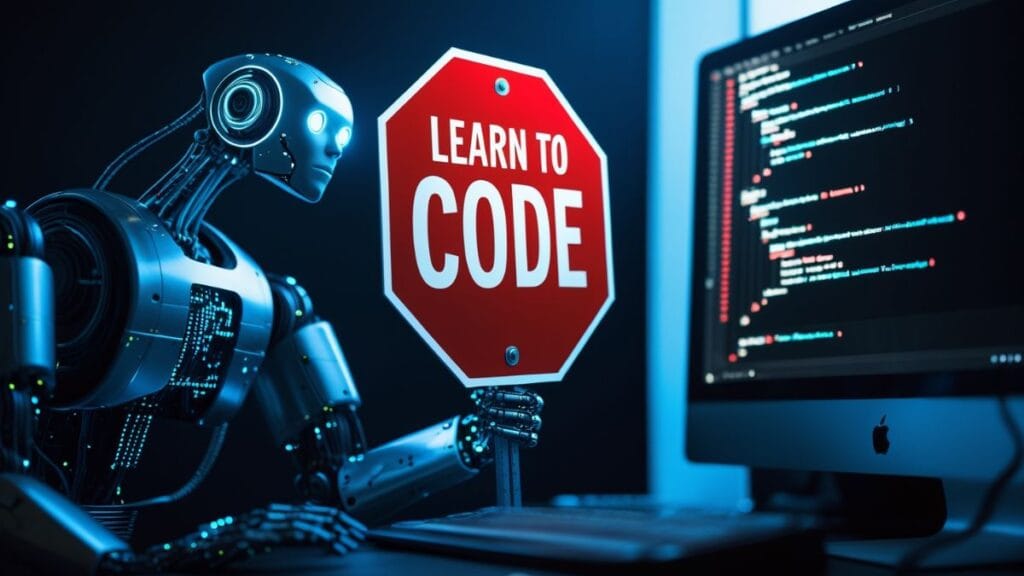Sam Altman recently shared his thoughts at the AI Ascent event hosted by Sequoia Capital that hint at a radical shift in how the internet might function in the coming years. His comments point to something much bigger than just new AI models or features – a complete rethinking of how online services connect and work together.
The Federated Future That Big Tech Isn’t Talking About
“There is sort of like a new protocol for the future of the internet where things get federated and broken down into much smaller components,” Altman stated. This vision goes far beyond the current discussions about AI chatbots and language models.
The internet we know now works through centralized services – Google for search, Amazon for shopping, Facebook for social connections. In Altman’s vision, these rigid structures break down. Instead, smaller components work together through shared protocols that handle authentication, payments, and data transfer at a fundamental level.
This matters because it shifts power from platforms to protocols. Think about email – no single company owns it. It works through shared standards anyone can build on. Altman seems to envision an AI-powered internet that works the same way.
The most telling part is when he says “everything can talk to everything.” This suggests a world where AI systems don’t sit in walled gardens but freely connect and share data when needed.
The Operating System Play You Missed
While many focus on ChatGPT’s features or model capabilities, Altman dropped a bombshell that deserves more attention: OpenAI aims to create “future things that are sort of similar to operating systems.”
This reveals OpenAI’s true ambition – not just to be an AI company but to create the fundamental layer on which all computing happens. Microsoft built Windows. Apple built macOS. OpenAI wants to build the first AI operating system.
What makes this different from existing OS platforms is the nature of AI itself. Traditional operating systems manage hardware resources and provide services to applications. An AI operating system would manage not just resources but actual intelligence – the ability to understand, decide, and create.
For businesses and developers, this means preparing for a world where the operating system itself has agency. Your applications won’t just run on a platform – they’ll collaborate with it.
The Platform Risk No One Is Addressing
“We want to be people’s like core AI subscription,” Altman stated plainly. This creates a tension that few analysts have noted: OpenAI wants to be both a platform for developers and the main AI service for end users.
This dual role creates inherent conflicts. If you build an AI service on OpenAI’s API, you face the risk that OpenAI itself might create a similar service within its consumer products. This platform risk exists with all tech giants, but it’s heightened with AI because of how versatile these systems are.
A key insight missed by most observers: Altman admitted they “have not yet figured out exactly what the sort of API or SDK or whatever you want to call it is to like really be our platform.” This suggests current API structures are temporary solutions, not OpenAI’s long-term platform strategy.
Smart developers should plan accordingly. Build with OpenAI’s tools, but maintain flexibility to switch providers or use multiple backends. Your long-term strategy should account for this uncertainty in OpenAI’s platform direction.
Voice Plus GUI: The Interface Shift We Aren’t Ready For
When asked about voice interfaces, Altman shared something that hints at his product vision: “I continue to think there’s something amazing to do about like voice plus GUI interaction that we have not cracked.”
This hybrid approach challenges how we think about computer interfaces. Most experts treat voice as a replacement for visual interfaces. Altman sees a future where they work together in new ways.
The practical impact of this vision is huge. Current UX design principles assume either keyboard/mouse input or voice commands. A truly hybrid interface would change how we build everything from websites to mobile apps to enterprise software.
For UX designers and product managers, this means rethinking core assumptions about how users interact with technology. Start experimenting with designs that blend voice commands with visual elements in ways that enhance rather than replace each other.
The Timeline That Matters Most
Perhaps the most valuable insight from Altman’s talk was his three-year roadmap for AI development:
2025 – The year of agents and coding assistants 2026 – AI making major scientific discoveries 2027 – AI moving from the digital to physical world through robots
This timeline lets businesses plan strategic investments with greater confidence. If you’re in software development, AI coding assistants will transform your workflow this year. If you’re in research and development, prepare for AI collaborators next year. And if you work with physical products or logistics, robotic automation will arrive sooner than most predict.
What makes this timeline credible is how it aligns with technical roadblocks we know exist in AI development. Coding assistance requires understanding text and code – something current models do well. Scientific discovery needs deeper reasoning but still works with digital information. Robotics requires all that plus mastery of the physical world – naturally the final frontier.
The New Digital Native
One of the most striking observations Altman made was about the generational divide in AI usage: “Maybe people in their 20s and 30s use it as like a life advisor something and then like people in college use it as an operating system.”
This points to something profound about technology adoption. Young users approach AI without preconceptions about what computers should do or how they should work. They’re creating entirely new usage patterns that older users – and most businesses – haven’t even considered.
The practical takeaway is to watch how younger users interact with AI tools. Their usage patterns predict how everyone will use these systems in the future. Companies that adapt to these patterns early will have a significant competitive advantage.
For example, young users often share their entire context with AI – their schedules, relationships, and decisions. They use AI as an extension of their thinking rather than just a tool for specific tasks. This suggests successful AI products will be highly personalized and deeply integrated into users’ lives.
Code as the Universal Interface
When asked if coding was just another vertical application, Altman was clear: “That one’s more central to the future of OpenAI.”
This reveals a crucial insight about how AI will reshape computing. In the future, the primary way systems will communicate won’t be through APIs or data formats but through code generation.
Instead of creating fixed interfaces between systems, AI models will write custom code on demand to connect services. This dramatically reduces integration costs and makes interoperability nearly universal.
For CTOs and tech leaders, this means the ability to generate and execute code safely becomes a core infrastructure requirement. Systems that can sandbox and run generated code will have massive advantages in an AI-centric world.
This approach also changes how we think about software development. Rather than building monolithic applications, companies will create small, specialized services that AI can compose through code generation.
What This Means For Your Business Now
The vision Altman describes isn’t science fiction – it’s actively being built. Companies need practical strategies to prepare:
First, start treating AI as infrastructure, not just a feature. Just as businesses needed internet strategies in the 1990s, they now need AI integration strategies that touch every part of their operations.
Second, focus on data readiness. The federated internet Altman describes will require well-structured data with clear permissions and access controls. Audit your data assets and start organizing them for this future.
Third, develop institutional knowledge about AI capabilities and limitations. Your team needs to understand what’s possible now and what’s coming next to make smart decisions about where to apply these technologies.
Finally, watch for protocol development. The “new protocol” Altman mentions doesn’t exist yet, but when standards start to emerge, early adopters will have significant advantages. Stay alert for signs of these new standards and be ready to implement them quickly.
The future internet Altman describes will transform how businesses operate, create value, and serve customers. The winners will be those who see beyond the hype of individual AI products to understand the deeper structural changes taking place.
What steps will you take to prepare your systems, teams, and strategies for this new internet? The time to start is now, while the protocols are still taking shape and the opportunities remain wide open.


